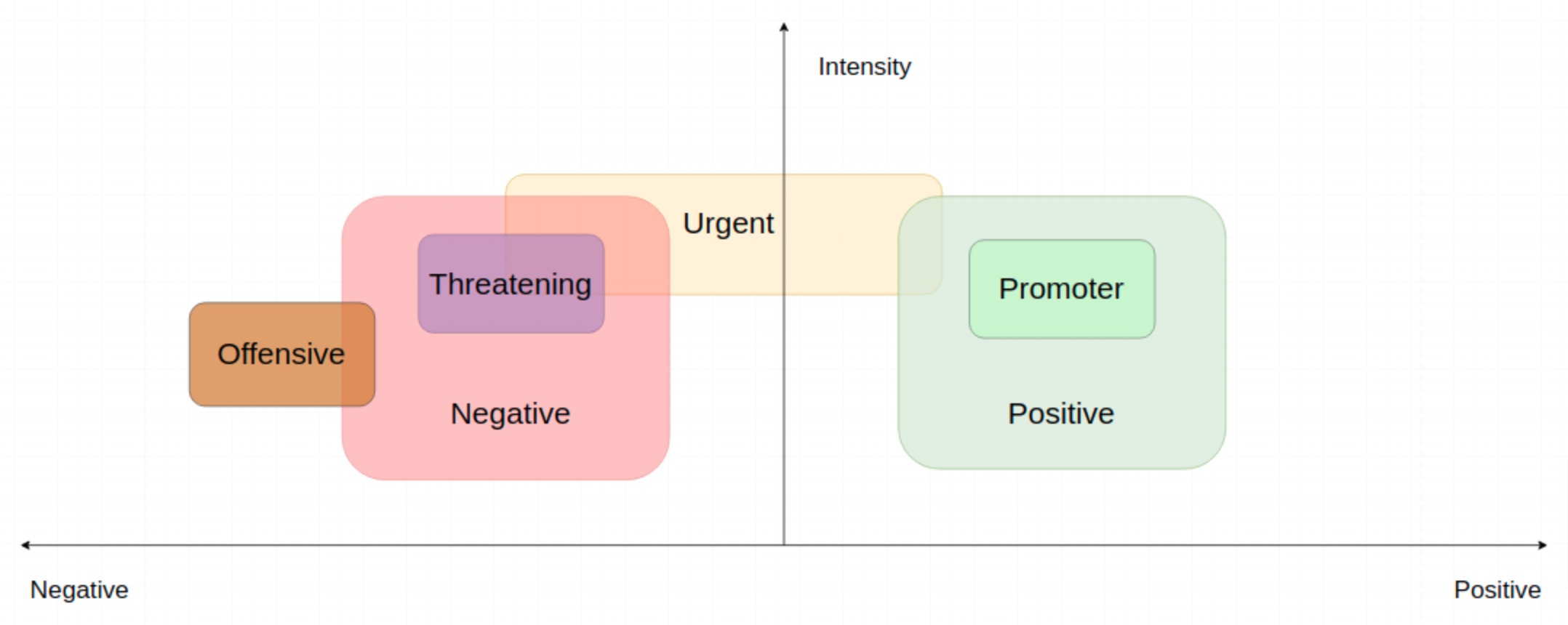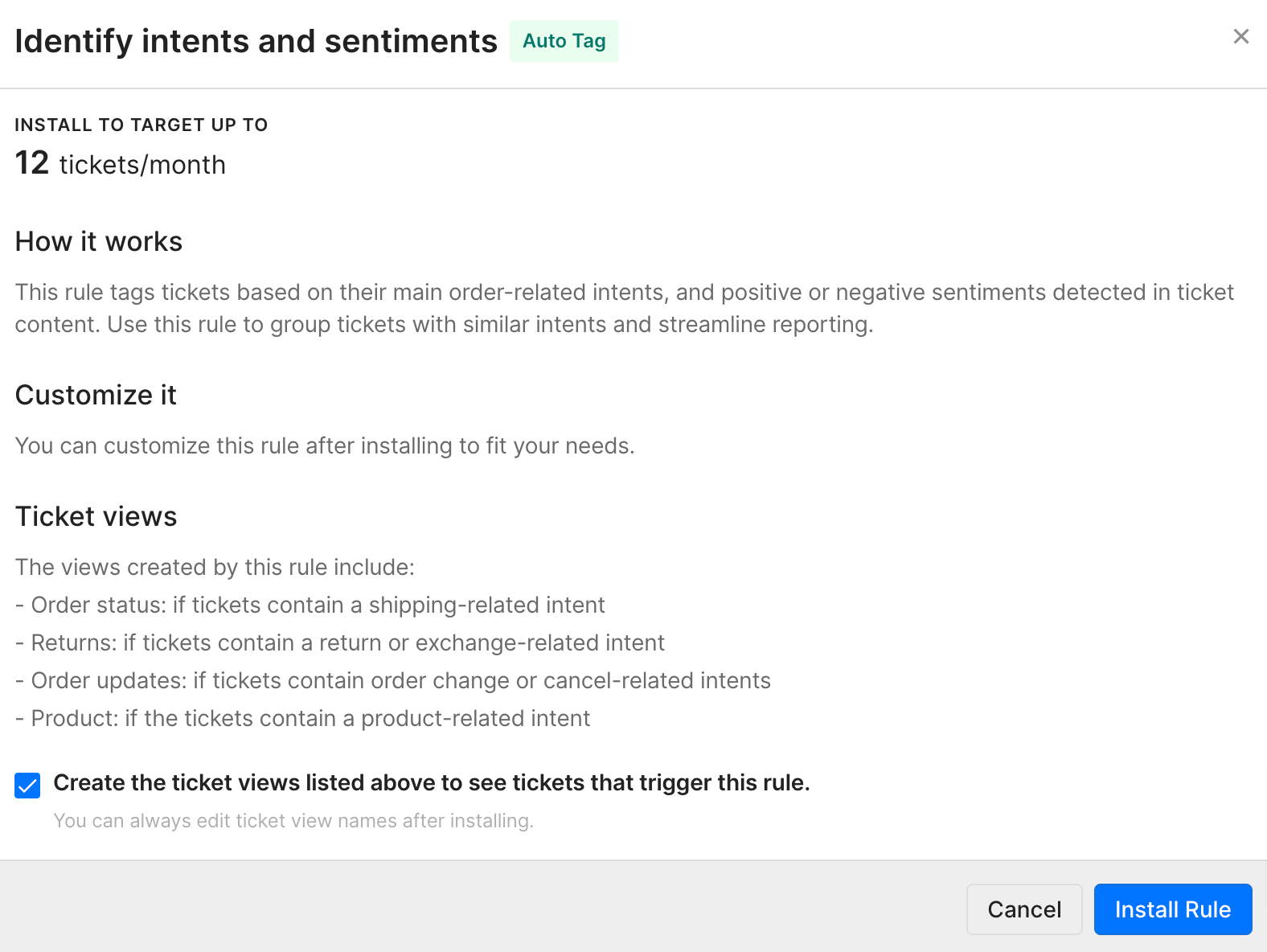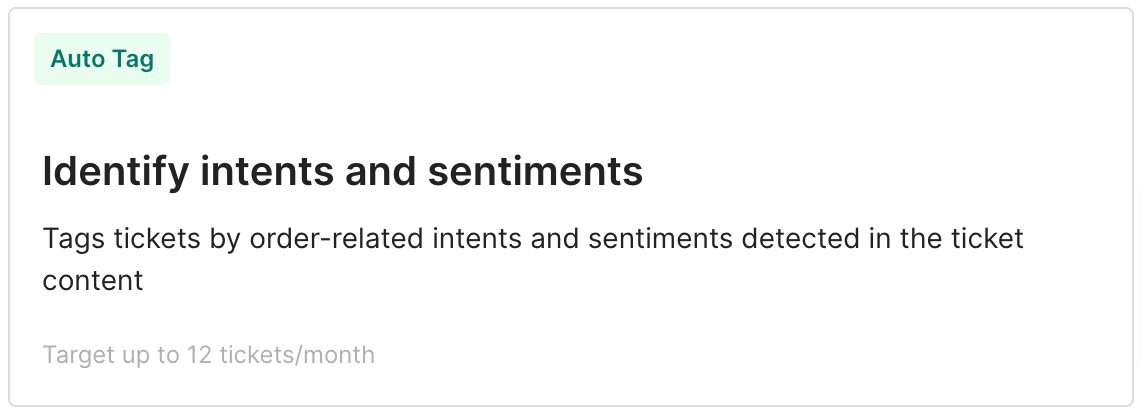Customer SentimentsUpdated 2 years ago
Facial expression, tone of voice, or body language are all clues that improve oral communication but are lacking in online interactions. Yet, knowing how a customer feels could greatly improve the quality of your customer service.
Gorgias can automatically detect some sentiments that can help you manage certain kinds of tickets automatically or simply understand the sentiment expressed in a ticket right away.
As per the screenshot below, more than one sentiment can occur at the same time:
List of customer sentiments
| Name | Description |
|---|---|
| positive | The customer is satisfied with the product, or the service, or shows positive feelings about something you posted on social media. Example: "That looks gorgeous!" |
| promoter | The customer shows intense satisfaction with the product, the service, or the brand Example: "I've been telling all my friends about your products." |
| negative | The customer shows general dissatisfaction with a product or service. Example: "I just received the package and I'm very disappointed." |
| threatening | The customer is threatening to take legal action, buy elsewhere, or post a negative review. Example: "Refund me now or I will sue you." |
| urgent | The customer shows impatience (multiple unsuccessful contacts) or mentions an urgent need (cancel or change an order before it ships, etc.). Example: "Ordered the wrong item. Need to cancel ASAP!" |
| offensive | The message contains offensive language or inappropriate adult suggestions. |
Steps
You can automatically apply specific Tags to tickets via Rules to figure out easily if some tickets require extra attention.
Here's how to create a simple Rule to tag tickets using customer sentiments:
3. Here you can also let the helpdesk create matching Views for the various sentiments.
Ideas for other Rules
- Tag negative/positive feedback for one product line (use the sentiment crossed with a keyword).
- Auto-hide negative comments on social media.
- Auto-like/close positive comments on social media.
- Flag promoter customers to retarget them in the future.
- Modulate your auto-response depending on sentiment (if the sentiment is urgent or negative, don't auto-respond).
FAQs
Can customer sentiments recognize emojis as well?
Yes, the sentiment detection model can recognize emojis.
Can a message be positive and negative at the same time?
No, the model will highlight the main sentiment of the message.
For example, if the message is "I like the shirt but it started losing its color after 2 washes, I am so disappointed...", the detected sentiment will be negative.
What languages are supported?
Intent detection works in the 16 most commonly spoken languages, so if the customer is writing over to you in another language, we can detect the keywords and trigger the Rule.
The currently supported languages are:
1. Arabic (ar)
2. Chinese (PRC) (zh)
3. Chinese (Taiwan) (zh-tw)
4. Dutch (nl)
5. English (en)
6. German (de)
7. French (fr)
8. Italian (it)
9. Portuguese (pt)
10. Spanish (es)
11. Japanese (ja)
12. Korean (ko)
13. Russian (ru)
14. Polish (pl)
15. Thai (th)
16. Turkish (tr)
